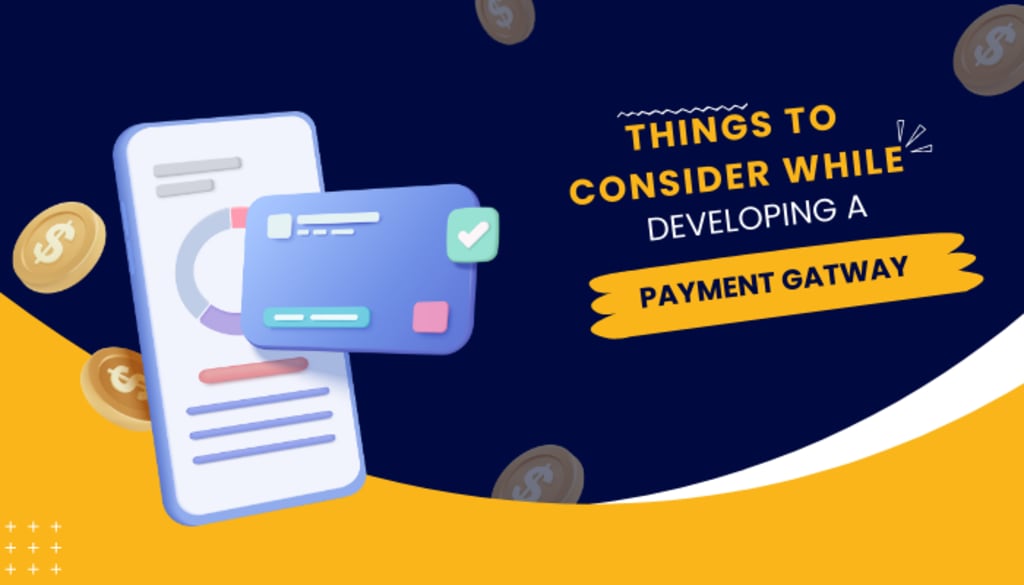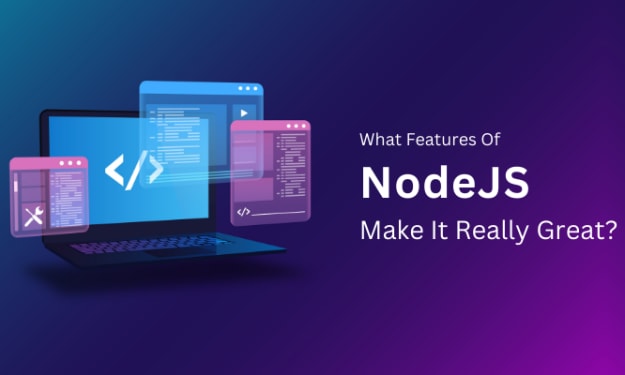Things to Consider While Developing a Payment Gateway
Consider While Developing a Payment Gateway

In the rapidly evolving landscape of digital payments, developing a payment gateway requires thorough planning and execution. Whether you're an eWallet app development company or a fintech app development firm, understanding the nuances of payment gateway development is paramount for success.
Essentials to Ensure The Creation Of A Secure Payment Gateway
This comprehensive guide explores essential considerations to ensure the creation of a secure, scalable, and user-friendly payment gateway that meets the needs of businesses and consumers alike.
1. Security Measures
Security is paramount in payment gateway development. Employ robust encryption protocols, adhere to PCI DSS standards, and integrate multi-factor authentication to protect sensitive financial data. Implement tokenization to replace card details with unique tokens, reducing the risk of data breaches. Regular security audits and vulnerability assessments are essential to identify and address potential threats proactively.
2. Scalability
Anticipate future growth and ensure your payment gateway in Fintech app development can handle increasing transaction volumes. Scalability is crucial to accommodate expanding user bases and transaction loads without compromising performance. Utilize cloud-based infrastructure and scalable architectures to seamlessly scale resources based on demand. Regular performance testing and capacity planning help maintain optimal performance levels during peak usage periods.
3. Payment Methods
Offer a diverse range of payment options to cater to the preferences of consumers and businesses. Support major credit/debit cards, digital wallets, bank transfers, and alternative payment methods to enhance convenience and accessibility. Stay abreast of emerging payment trends and technologies to adapt and integrate new payment methods seamlessly. Customizable payment options enable merchants to tailor their payment offerings to their target audience.
4. User Experience
Prioritize user experience to streamline the payment process and enhance customer satisfaction. Design an intuitive interface with clear instructions and minimal steps for payment processing. Implement responsive design principles to ensure a seamless experience across desktop and mobile devices. Incorporate features such as one-click payments, saved payment methods, and guest checkout options to simplify the user journey.
5. Integration Capabilities
Ensure compatibility with various platforms and systems to facilitate seamless integration. Provide well-documented APIs and SDKs to simplify the integration process for developers. Support integration with popular e-commerce platforms, mobile apps, and point-of-sale systems to broaden your market reach. Collaborate with third-party developers and partners to create an extensive ecosystem of integrated solutions.
6. Compliance Regulations
Stay abreast of regulatory requirements and compliance standards to maintain legal compliance and build trust with users and stakeholders. Adhere to local and international regulations such as GDPR, PSD2, and KYC/AML norms. Implement robust identity verification processes and transaction monitoring systems to detect and prevent fraudulent activities. Regular compliance audits and updates ensure ongoing adherence to evolving regulations.
7. Transaction Fees
Define transparent pricing structures for merchants and consumers to foster trust and transparency. Balance competitive transaction fees with revenue generation to attract merchants while ensuring affordability for consumers. Offer flexible pricing plans and volume-based discounts to cater to businesses of all sizes. Transparent fee structures and billing processes help build long-term relationships with merchants and consumers.
8. Fraud Prevention
Implement advanced fraud detection and prevention measures to safeguard against fraudulent activities. Utilize AI-based algorithms, machine learning, and behavioral analytics to identify patterns indicative of fraudulent behavior. Implement real-time transaction monitoring and alerts to detect suspicious activities promptly. Collaborate with industry organizations and cybersecurity experts to stay ahead of emerging threats and fraud schemes.
9. Customer Support
Provide responsive customer support channels to address inquiries and resolve issues in a timely manner. Offer multiple support channels, including live chat, email, and phone support, to accommodate diverse customer preferences. Develop comprehensive knowledge bases and FAQs to empower users to troubleshoot common issues independently. Proactive communication and personalized support enhance customer satisfaction and loyalty.
10. Reliability and Uptime
Ensure high availability and reliability of the payment gateway to minimize downtime and disruptions in service. Implement redundant infrastructure, failover mechanisms, and disaster recovery plans to mitigate potential risks. Monitor system performance and uptime metrics closely to identify and address any issues promptly. Regular maintenance and updates help ensure the ongoing reliability and stability of the payment gateway.
11. Customization Options
Provide flexibility for customization to meet the unique needs of merchants and partners. Offer white-label solutions and branding options to enable merchants to maintain their brand identity throughout the payment process. Allow customization of features, UI/UX elements, and integration options to align with specific business requirements. Tailored solutions enhance merchant satisfaction and foster long-term partnerships.
12. Transaction Settlement
Streamline the transaction settlement process for merchants to optimize cash flow and financial management. Offer timely and transparent settlement procedures, along with detailed transaction reports and analytics. Provide flexible settlement options, including scheduled settlements and on-demand payouts, to accommodate varying business needs. Automated reconciliation processes minimize manual intervention and streamline accounting workflows.
13. API Documentation
Develop comprehensive API documentation to facilitate seamless integration with the payment gateway. Provide clear and detailed API documentation, sample code, and SDKs to guide developers through the integration process. Offer developer sandboxes and testing environments to enable developers to test and debug their integrations effectively. Regular updates and version control ensure the accuracy and relevance of the API documentation.
14. International Expansion
Plan for international expansion to tap into global markets and reach a broader audience. Support multiple currencies, languages, and regional payment methods to accommodate diverse customer preferences. Conduct market research to understand cultural nuances and regulatory requirements in target regions. Forge partnerships with local payment providers and financial institutions to navigate regulatory complexities and expand your global footprint.
15. Testing and Quality Assurance
Conduct rigorous testing to ensure the functionality, security, and performance of the payment gateway. Implement automated testing frameworks and regression testing to validate system behavior across different scenarios. Perform penetration testing and vulnerability assessments to identify and remediate security vulnerabilities proactively. Regular quality assurance audits and code reviews maintain the overall reliability and integrity of the payment gateway.
16. Feedback Mechanisms
Solicit feedback from users, merchants, and partners to continuously improve the payment gateway. Implement feedback loops and analytics tools to gather insights into user behavior and preferences. Actively engage with stakeholders through surveys, user forums, and focus groups to gather feedback and suggestions for improvement. Iterate on features and functionalities based on user feedback to enhance the overall user experience.
Conclusion
Developing a payment gateway requires careful consideration of various factors, ranging from security and scalability to user experience and compliance. By prioritizing these key considerations and adopting a customer-centric approach, you can create a robust and reliable payment gateway that meets the needs of businesses and consumers alike. Stay agile and adaptable to evolving market trends and regulatory requirements to ensure long-term success in the dynamic landscape of digital payments.
About the Creator
Roshan Choudhary
Roshan's expertise lies in developing comprehensive Content plans tailored to each user's unique needs, generating impactful results and exceptional ROI.
Check it out here - https://www.nimbleappgenie.com/
Enjoyed the story? Support the Creator.
Subscribe for free to receive all their stories in your feed. You could also pledge your support or give them a one-off tip, letting them know you appreciate their work.






Comments
There are no comments for this story
Be the first to respond and start the conversation.